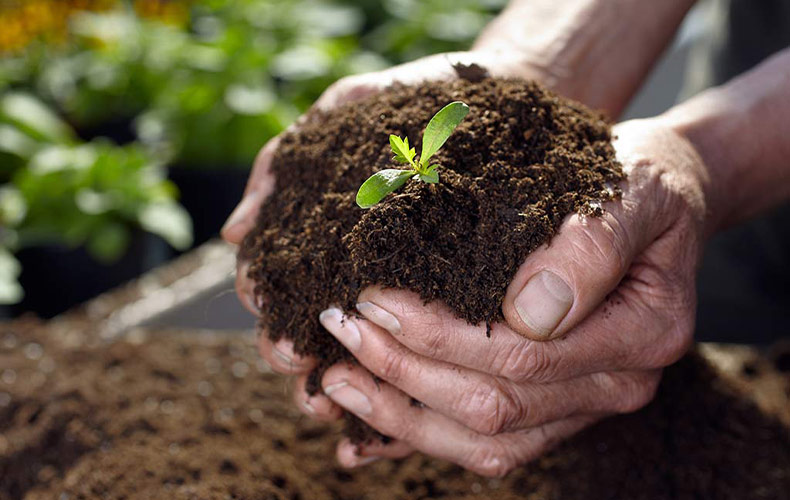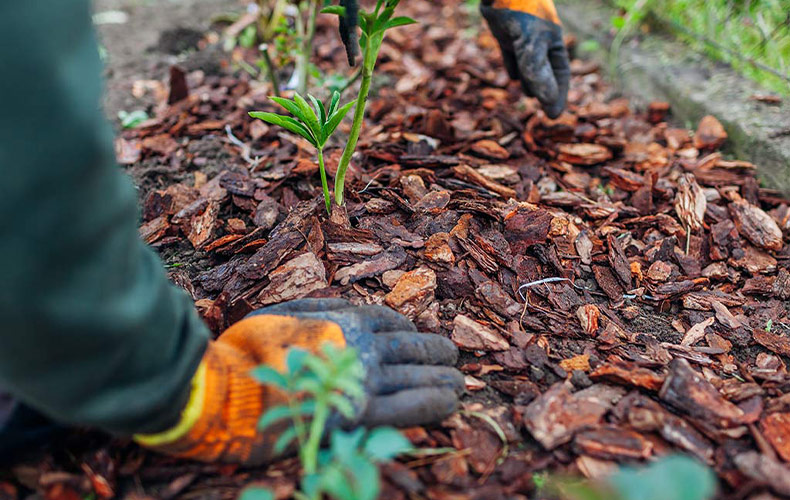We use cookies to make your experience better. To comply with the new e-Privacy directive, we need to ask for your consent to set the cookies. Learn more.
The Benefits of Topsoil and Mulch for Spring Planting in the UK
With the weather slowly improving and the sun beginning to shine, it’s a beautiful reminder that spring is almost here. Now is the perfect time to begin planting seeds and bulbs, whether in your vegetable patch or flower borders. With that in mind, let’s talk about how important topsoil and mulch are to the health of your plants.

What Are Topsoil and Mulch?
Firstly, let’s go back to basics and briefly cover what topsoil and mulch actually are.
Topsoil is the uppermost layer of soil (around the top 10 inches). It is rich in organic matter and packed with nutrients essential for plant growth.
Mulch is a layer of organic or inorganic material that sits on top of the soil. It works to protect the soil, provide additional nutrients, or both.
Why Are Topsoil and Mulch So Important?
Different types of topsoil, mulch, and bark provide varying benefits, but the key advantages are as follows:
Topsoil
- Nutrient Supply: Rich in organic matter, topsoil provides essential nutrients for plant growth in a low-maintenance way. Instead of frequently spraying fertiliser, you simply plant your bulbs or seeds in the topsoil, optionally cover with mulch, and let nature do its work.
- Root Growth: Loose, well-aerated topsoil allows roots to spread easily, helping plants grow quickly and without restriction.
Drainage & Moisture Retention: Good-quality topsoil helps regulate water, preventing pooling on the surface (which can damage plants) while also retaining moisture during dry spells.
- Microorganisms: Beneficial bacteria and fungi live within topsoil, helping to break down organic material and make nutrients more accessible to plants.
Mulch
- Temperature Regulation: Mulch acts like a protective blanket, keeping soil temperatures stable year-round. It helps protect against extremes such as frost in winter and heat stress in summer.
- Weed Prevention: A thick layer of mulch or bark blocks sunlight, making it impossible for weeds to grow.
- Erosion Protection: The extra layer on top of your soil helps prevent erosion caused by heavy rain and strong winds.
Compaction Prevention: Normally, heavy rain compacts the top layer of soil, which can restrict root growth. A layer of mulch helps protect against this compaction.
How Topsoil and Mulch Work Together
Before planting, it’s important to create a loose, well-aerated layer of topsoil to plant your seeds and bulbs into. This provides a nutrient-rich foundation for strong root growth. Once planting is complete, applying a layer of mulch will protect your plants as they grow into summer. Since the UK's weather is always unpredictable, mulch is particularly useful for shielding plants from sudden heavy rain, strong winds, or unexpected frosts.

Understanding the Different Types of Topsoil
Here at Mainland Aggregates, we offer four types of topsoil and seven types of mulch, each providing different benefits depending on your needs. It’s important to choose the right one for your specific project. You can find detailed descriptions of each type on our topsoil product page, and the same applies to our mulch range.
Get the Best Results This Spring
Whatever your planting ambitions this spring, make sure to check out our range of topsoil and mulch to give your garden the best possible start.
